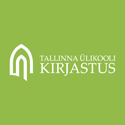Paramilitaarne vägivald kui poliitilise radikaliseerumise toitepinnas? [Paramilitary violence as fodder for political radicalisation?]
Abstract
I maailmasõja järel Baltikumis võidelnud Saksa vabakorpuste näide
The example of the German Freikorpswhich fought in the Baltic region after WWI
The article discusses the history of the Freikorps (“Free Corps”) formed in Germany after WWI, in a comparative analysis of two Freikorps which were recruited in Germany and fought in the Baltic region, and two Freikorps which only fought in Germany. The article compares the members of those Freikorps – the Baden assault battalion Kurland and the Von Medem Freikorps which fought in the Baltic region and the Würzburg Freikorps and the Haas battalion which operated only in Germany – on the basis of their generational affiliation as well as their subsequent involvement in national socialist organisations. It is concluded that the claims that the Freikorps members who fought in the Baltic region mostly belonged to the “war youth” generation who did not fight in WWI and whose fighting in the Baltic region caused their radicalisation manifested by their higher than average membership in the NSDAP, SS and SA, cannot be corroborated on the basis of the analysed units.
Keywords
WWI, Weimar Republic, Freikorps, wars of independence in the Baltic countries, war youth and WWI veterans, national socialist organisations
Full Text:
PDFRefbacks
- There are currently no refbacks.
Kirjastaja / Published by:

ISSN 2228-0669 (trükis / print)
